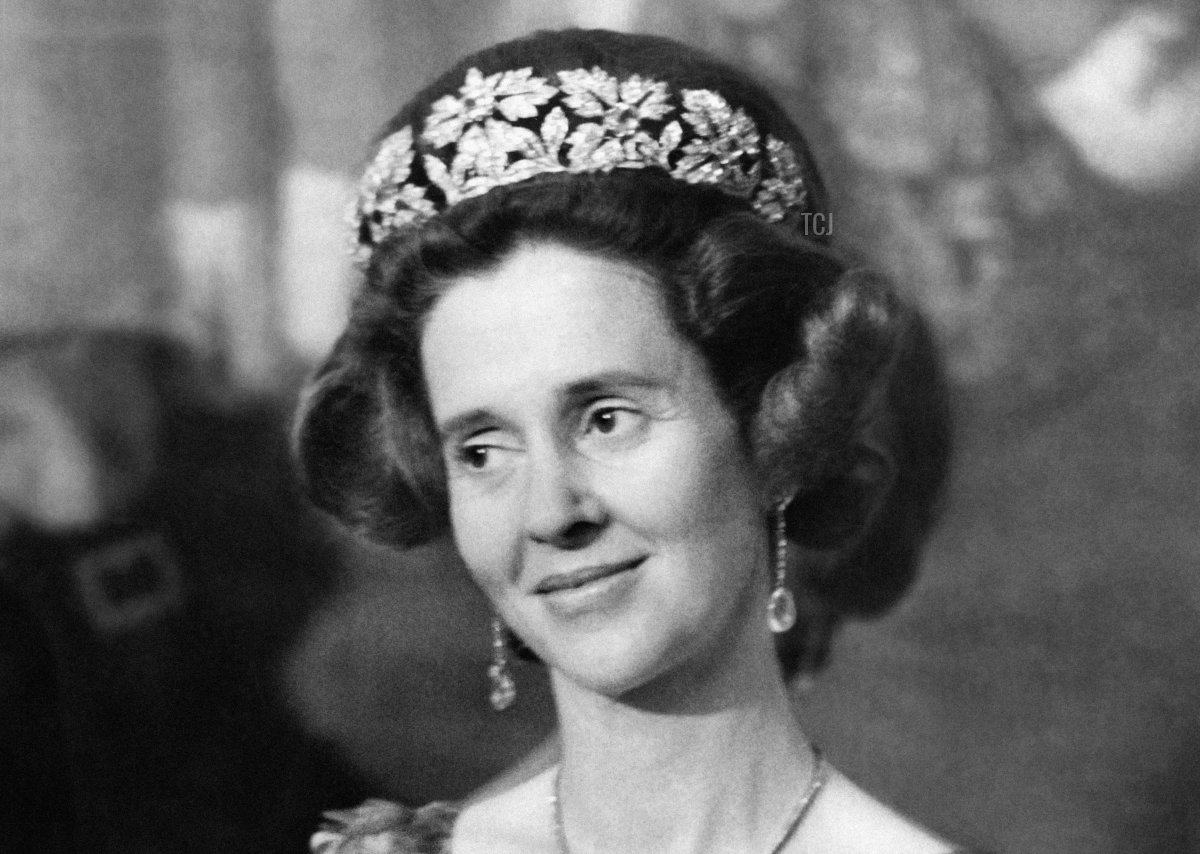
Today, we’ve got a closer look at a tiara that Queen Fabiola of Belgium received as a wedding present in December 1960—61 years ago today!
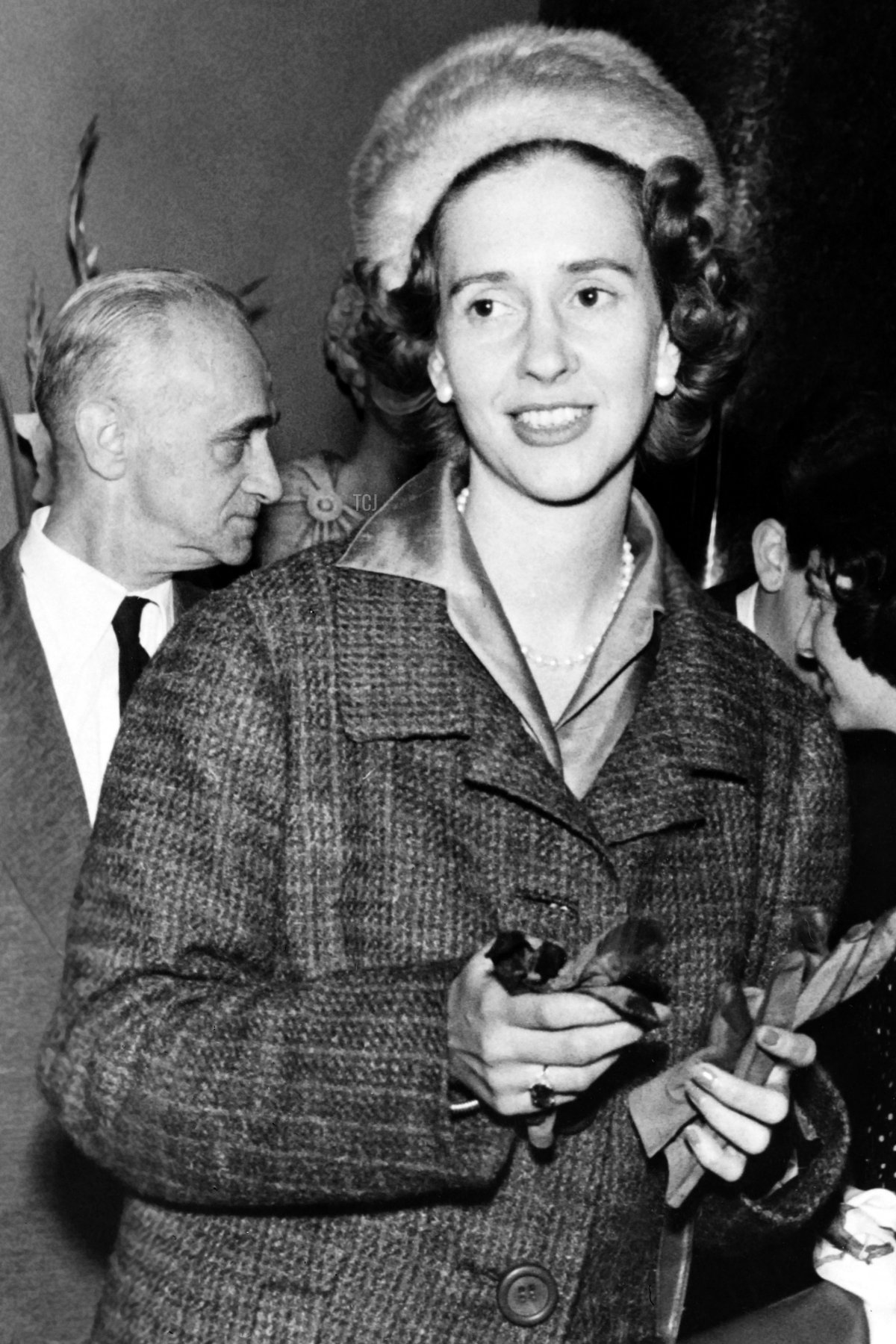
In 1960, the royal world was surprised by the news that the young King Baudouin of the Belgians had finally found a bride. Baudouin, who had just turned 30, had become the country’s monarch in 1951, following the abdication of his father, King Leopold III. As monarch, Baudouin had lived a solitary life, something that his advisors became concerned about. In the late ’50s, Cardinal Leo Suenens, one of Belgium’s leading Catholic officials, decided that it was time to play matchmaker. With Baudouin’s consent, Suenens dispatched a nun, Sister Veronica O’Brien, to find a bride for the king. The checklist for the ideal queen consort wasn’t a long one: she had to be part of a noble family, and she had to be as committed to the Catholic religion as Baudouin was.
Sister Veronica’s search led her to Spain, where she stumbled on an ideal candidate. Doña Fabiola Mora y Aragón (pictured above, ca. 1960) was working as a nurse in Madrid. She was the daughter of the wealthy Marqués de Casa Riera—and her godmother was the formidable Queen Ena of Spain. Fabiola was shy and serious, and some reported that she’d even considered joining a religious order. Sister Veronica wrote back at once to Cardinal Suenens, lauding Fabiola as “a breath of fresh air, tall, thin, well-built, good-looking and striking, bubbling with life, intelligence and energy.” They’d found their future queen.
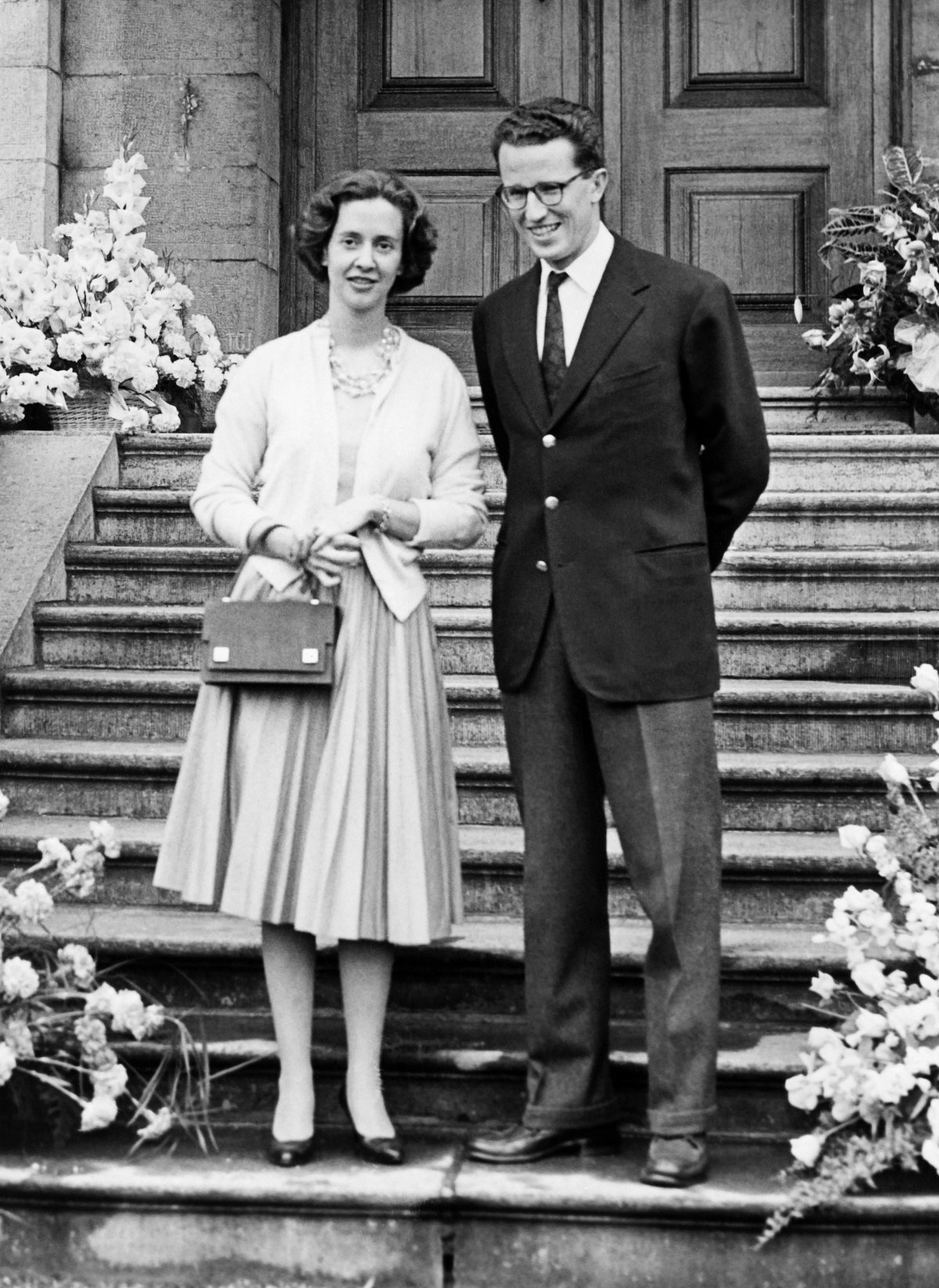
When Baudouin and Fabiola met, it became clear almost immediately that the two were a good match. They managed to keep their romance private until September 16, 1960, when Prime Minister Eyskens announced the couple’s engagement in a broadcast to the nation. A few days later, the couple posed for pictures at Ciergnon Castle, one of the Belgian royal family’s summer residences. She showed off the emerald engagement ring that Baudouin had given her. They were joined by their families: her mother, Blanca, and her eldest brother, Gonzalo, represented Fabiola’s family, while Baudouin was accompanied by his father, King Leopold III, his stepmother, Princess Lilian, and his half-sisters, Princess Marie-Christine and Princess Marie-Esmerelda.
Almost immediately, wrote Peter Stephens, the Brussels correspondent for London’s Daily Mirror, the people of Belgium began comparing Doña Fabiola to another beloved member of the Belgian royal family: Queen Astrid, Baudouin’s late mother. Rumors had already begun to circulate, he noted, that Fabiola would pay tribute to the mother-in-law she’d never know by wearing her grand tiara for the wedding ceremony. Astrid “was idolised by the Belgian people,” Stephens wrote, adding, “Her name crops up whenever Fabiola is mentioned. And already plans are being made for Fabiola, 32, to wear the late Queen’s crown at her wedding ceremony.” The rumors were true: Fabiola would indeed wear Astrid’s Nine Provinces Tiara in its grandest setting for her royal wedding in a few months’ time.

The royal wedding was scheduled for December 15, 1960, in Brussels. Meanwhile, Fabiola returned to Spain to begin preparations for her move to Belgium. While she was there, she received yet another tiara from the people of her native country. Carmen Franco, the wife of Spanish head of state Francisco Franco, presented Fabiola with the jewel on the evening of December 5, 1960, which also happened to be Fabiola’s 32nd birthday. Delightfully for us, the presentation of the tiara was captured by press cameras, which showed Fabiola beaming over the tiara in its fitted case.
The tiara, which features diamond strawberry leaves in its design, was almost certainly inspired by ducal coronets worn by Spanish aristocrats. (The Duchess of Alba wore one of those coronets, for reference.) The version gifted to Fabiola was an incredibly versatile tiara. It could be worn as a coronet, or as a wreath-style tiara, or as a necklace. The individual strawberry leaves could be separated from the piece and worn as individual ornaments. And the center gemstones of each leaf were also interchangeable: the tiara could be worn in aquamarine, emerald, or ruby settings.
Fabiola and her mother boarded a plane on the day after the presentation to fly to Belgium for the nuptials. Newspapers wrote that Fabiola “was visibly moved as she waved from the plane’s stairway” and noted that she “took with her a crown of gold, studded with emeralds, diamonds and pearls. It was presented to her last night by Carmen Polo de Franco, wife of the Spanish chief of state, on behalf of the people of Spain.”
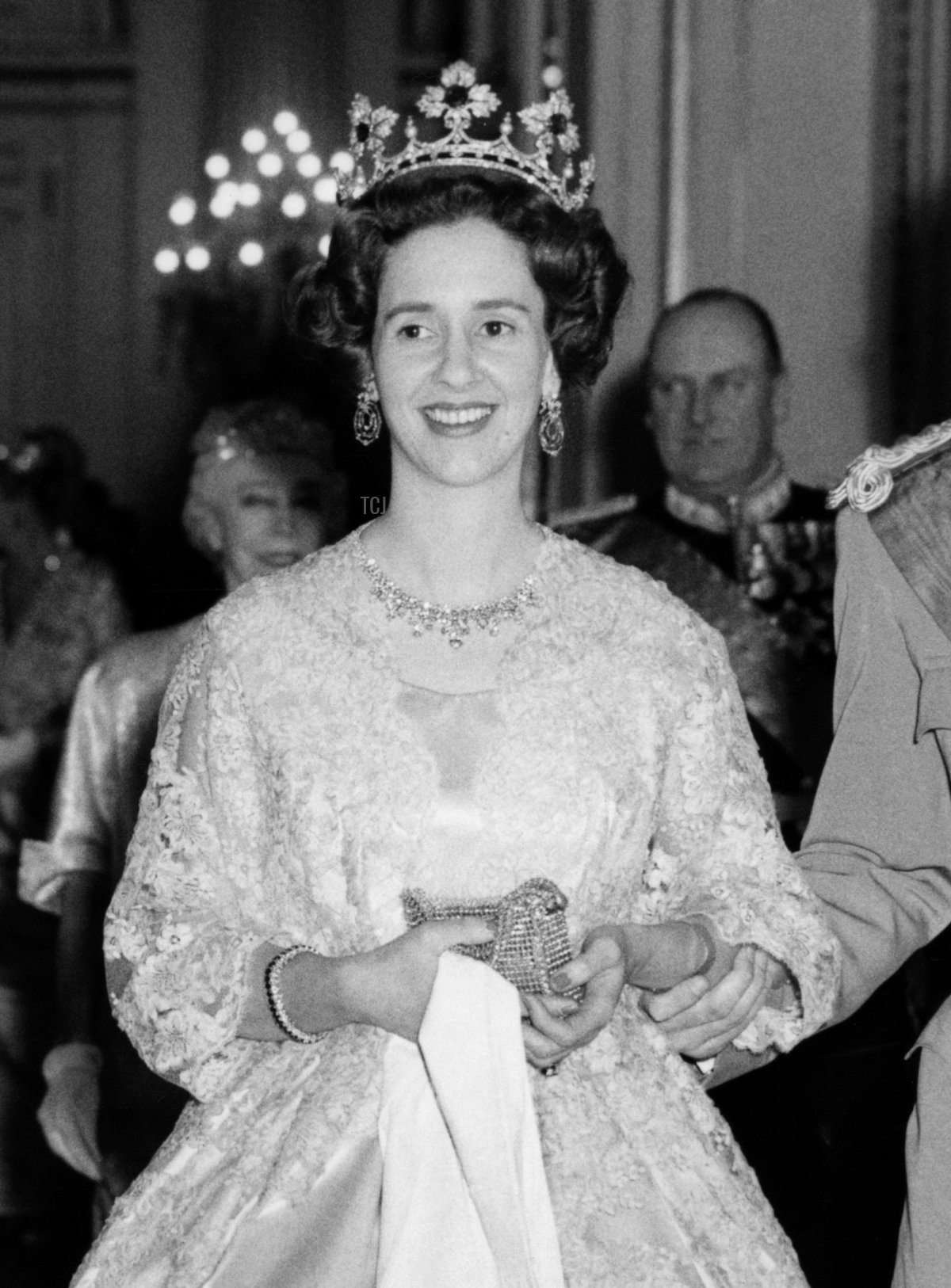
Newspapers also printed rumors that Fabiola had decided to wear the new Spanish tiara instead of Queen Astrid’s tiara for her royal wedding. That wasn’t the case. She wore the Nine Provinces Tiara for the wedding, but before that, she wore the Spanish tiara twice for pre-wedding gala events. The first of these, a ball at the Cinquantenaire Museum in Brussels, was held on December 13, 1960. Fabiola wore the tiara with another of her wedding gifts, the Wolfers Tiara, which she wore in its necklace setting. She also wore her circle earrings, which were set with diamonds and other colored gems, and her diamond and ruby bracelet. Fabiola’s ensemble for the event, a gown with a lace jacket overlay, was a bright shade of canary yellow.
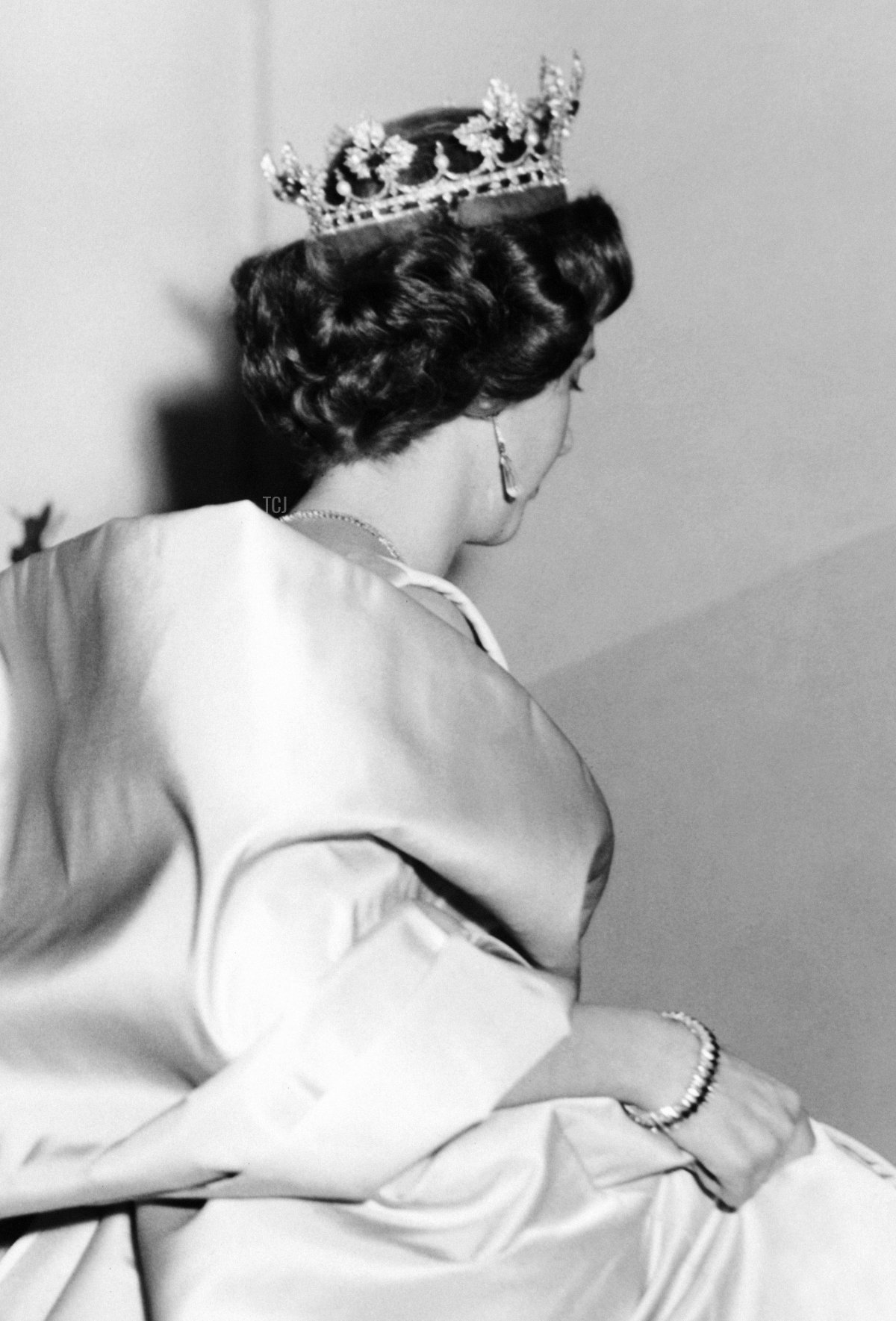
She also wore the coronet setting of the tiara the following evening, for the ball that was held at the Royal Palace of Brussels. This time, she paired it with aquamarine earrings, and she again wore the diamond and ruby bracelet.
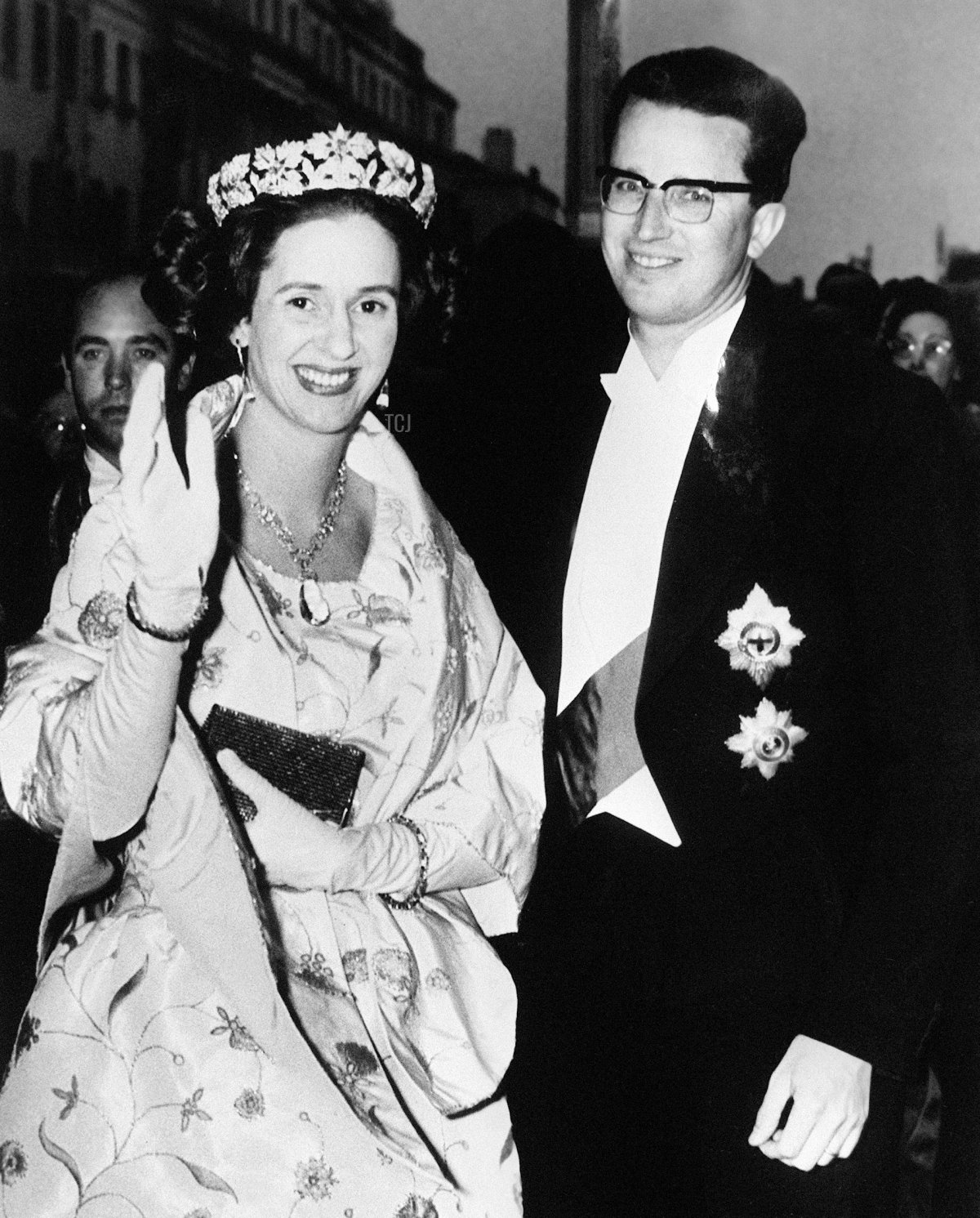
Throughout her royal life, Queen Fabiola wore the tiara in various configurations for all sorts of formal occasions, including state banquets and dinners, gala receptions, and royal weddings. In May 1963, she wore the wreath setting of the tiara with its aquamarine center stones for a dinner at the Belgian Embassy in London during the couple’s state visit to the United Kingdom. She also wore the diamond necklace often worn with the strawberry leaf elements, but this time with her large aquamarine pendant, as well as aquamarine earrings and her diamond and ruby bracelet. You can see more from this appearance (including color photos) in this article, and you can learn more about all of the tiaras worn during this state visit in this article.

Fabiola also wore the aquamarine wreath setting of the tiara in this photograph, taken in Brussels in June 1971. She also wears aquamarine drop earrings and a necklace with five aquamarine drop pendants.

The coronet setting also made numerous appearances as well. It’s tough in these black-and-white photographs to tell whether emeralds or rubies have been worn with the tiara when the stones photograph so darkly, so I won’t speculate about which stones were worn for this occasion, a January 1963 appearance in Brussels. But you will recognize Fabiola’s necklace: once again, it’s the necklace setting of the Wolfers Tiara.
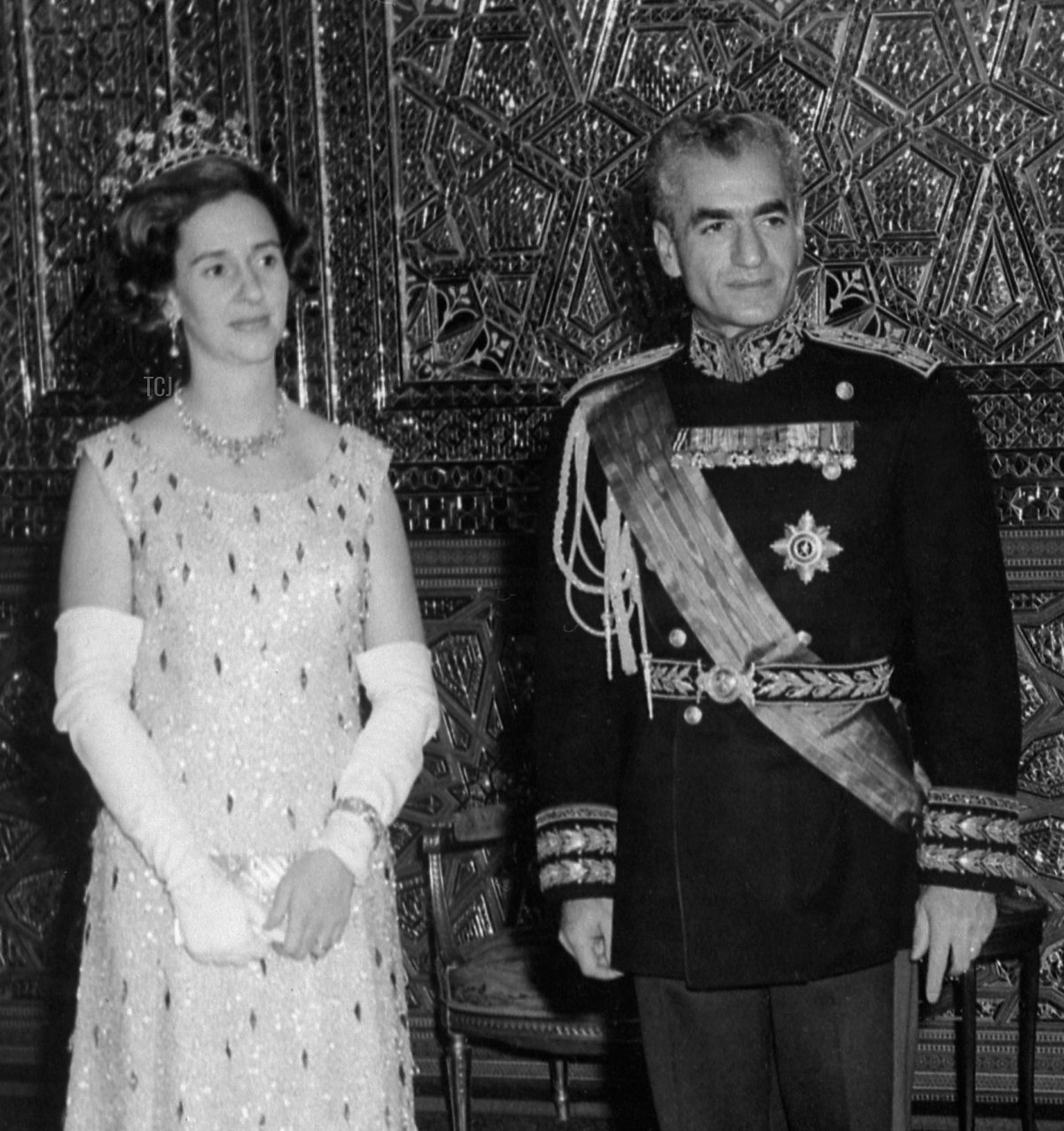
Fabiola also wore the coronet setting of the tiara in November 1964 for a formal event during the Belgian state visit to Iran. This photo of Fabiola with the Shah of Iran was taken at the Marble Palace in Tehran. She also wears the Wolfers Tiara as a necklace and her diamond and pearl drop earrings, plus a diamond bracelet on her left wrist.
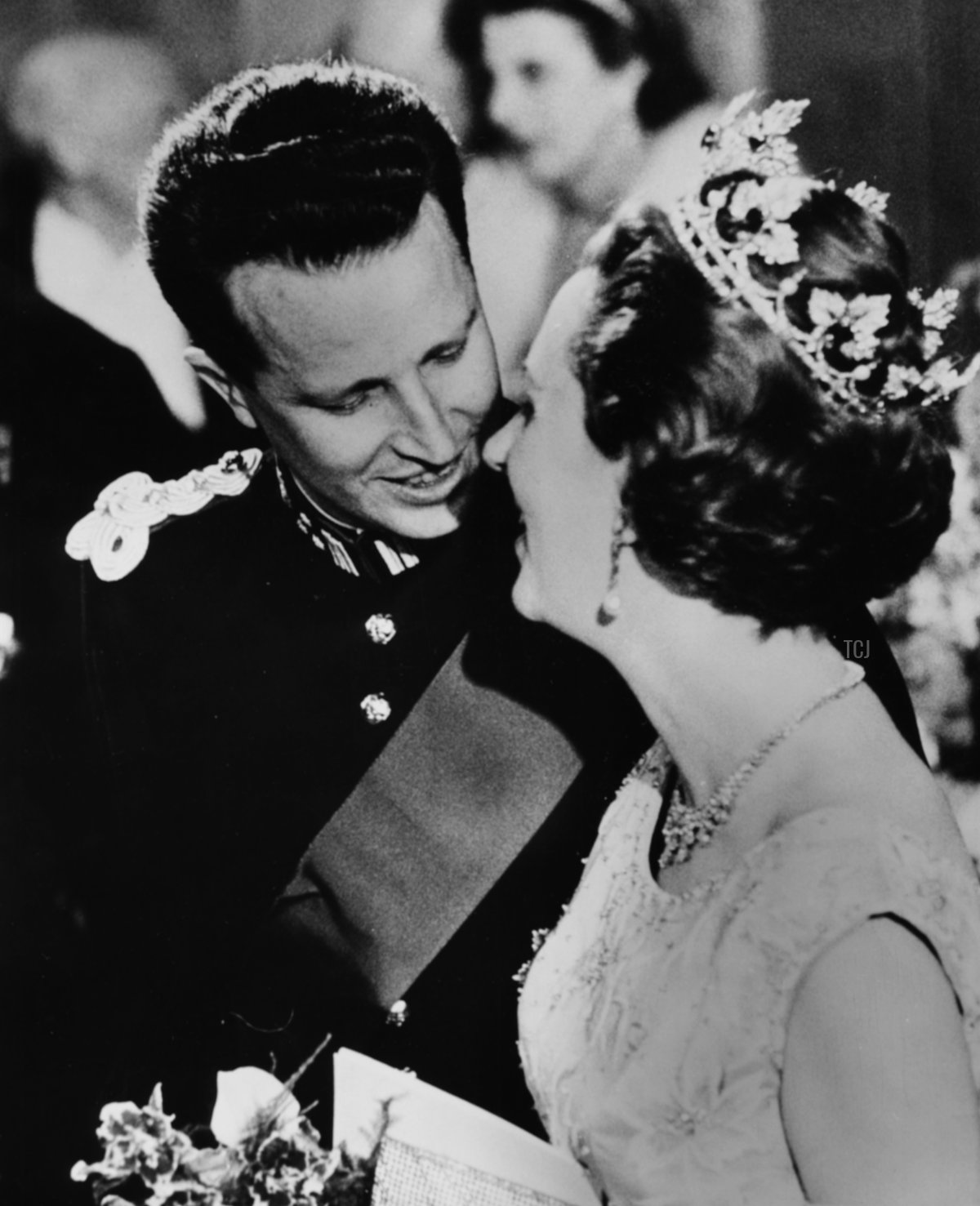
And here, Fabiola wears the coronet setting of the tiara, the Wolfers Tiara as a necklace, and the diamond and pearl drop earrings for a trip to the ballet in Brussels in May 1966.
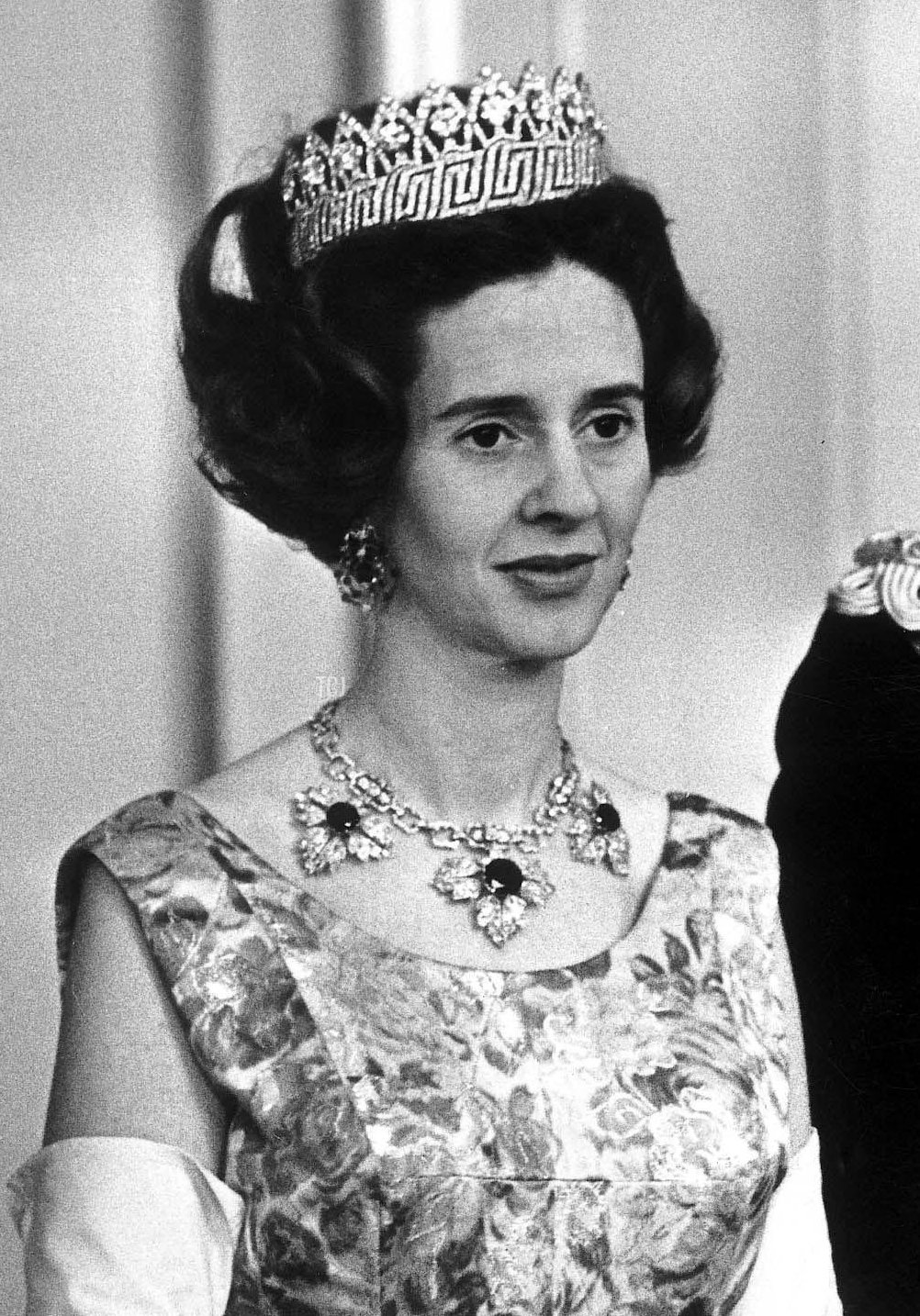
For this gala event in August 1968, Fabiola wears the necklace setting of the tiara, plus the Nine Provinces Tiara and her diamond circle earrings.
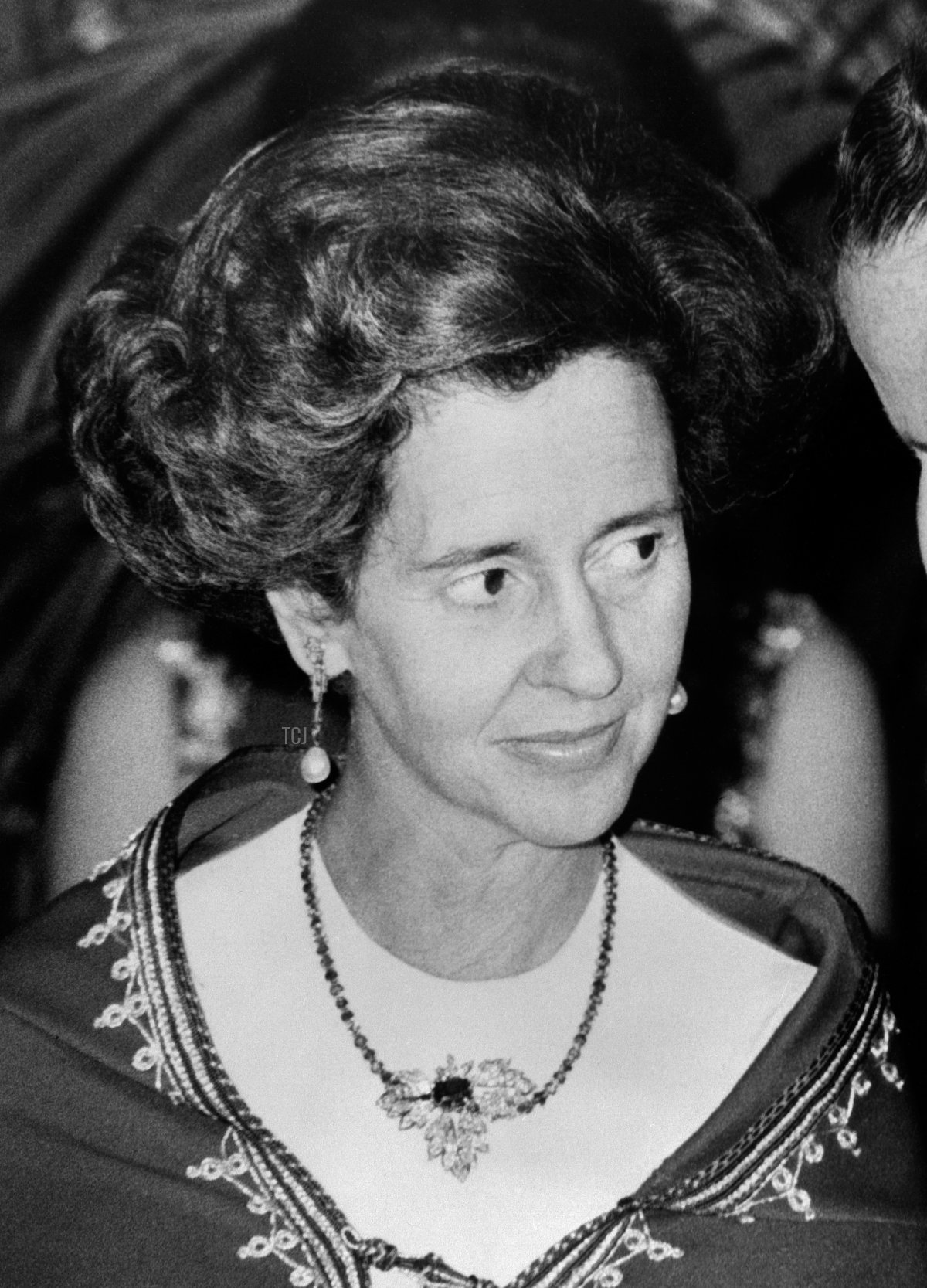
She also occasionally used one of the strawberry leaves as a pendant/enhancer on a necklace, as she does here during a reception in Brussels in May 1978. She’s also wearing her diamond and pearl drop earrings.
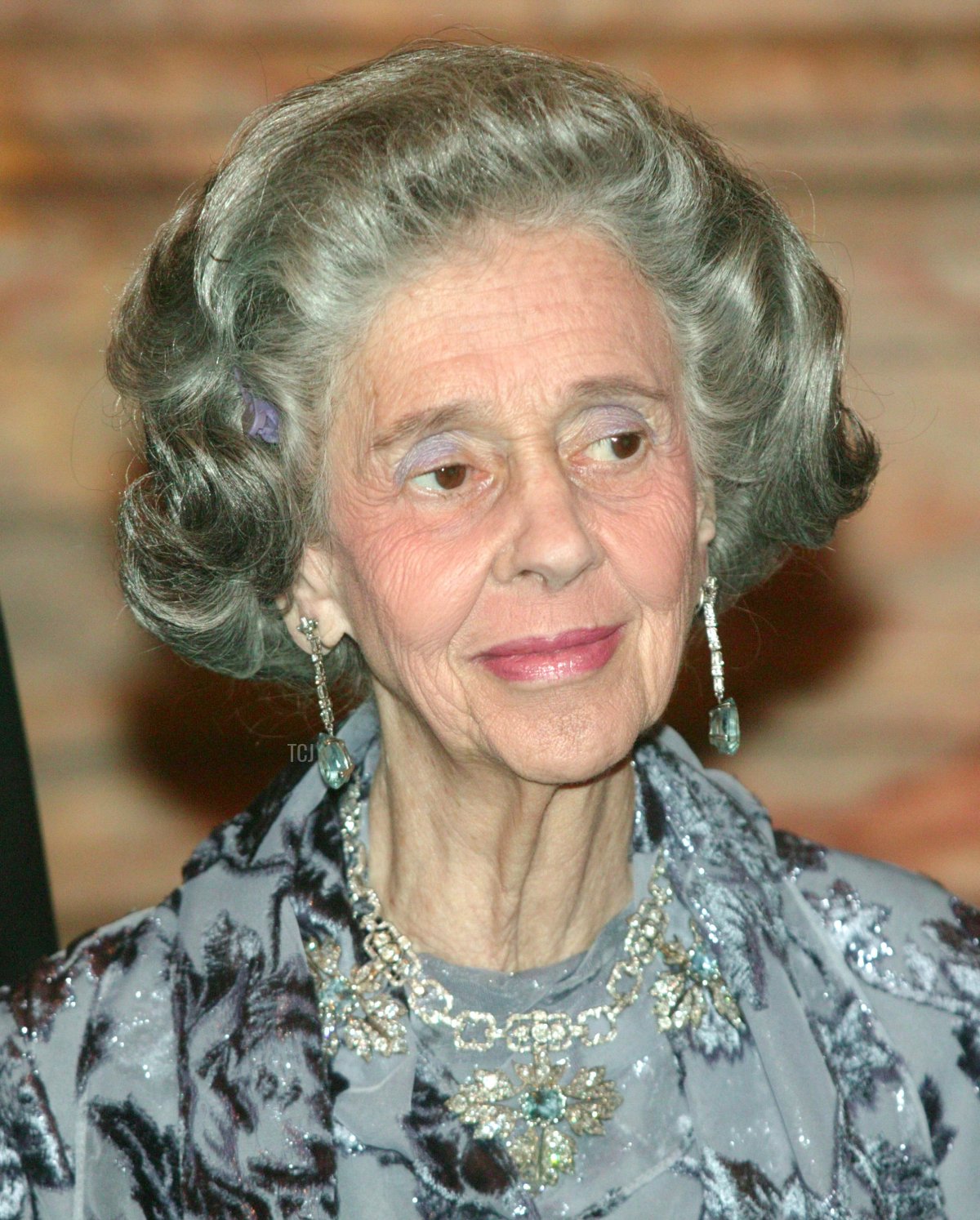
Fabiola continued to wear the jewel into her later years. One of its very last public appearances came in October 2004, when she wore the aquamarine necklace setting at the Palace of Laeken during a state visit from the President of Poland. She also wore diamond earrings with large aquamarine pendant drops.
So now, the million-dollar question: where is the Spanish Wedding Gift Tiara now? We haven’t seen anyone wear it since Fabiola’s death, which coincidentally also took place on this day in 2014. Many have guessed (or hoped) that the tiara remains with the Belgian royals today. Indeed, many other pieces of jewelry worn by Fabiola in this article—the Nine Provinces Tiara, the Wolfers Tiara, the diamond and pearl drop earrings, the diamond and ruby bracelet—are currently worn by Queen Mathilde, the wife of Fabiola’s nephew, King Philippe. Could we perhaps hope to one day see Mathilde wear this particular tiara, too?
Leave a Reply
You must be logged in to post a comment.